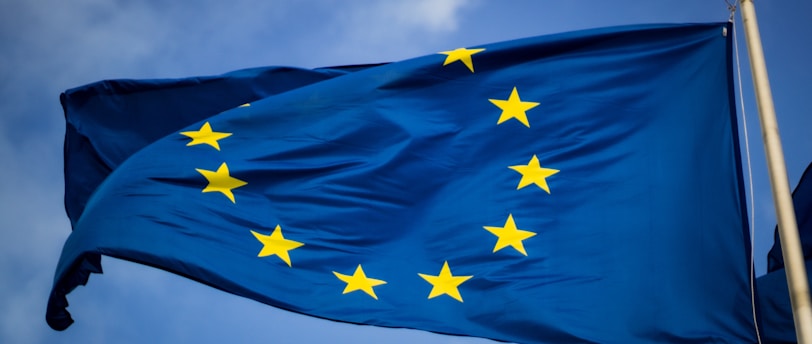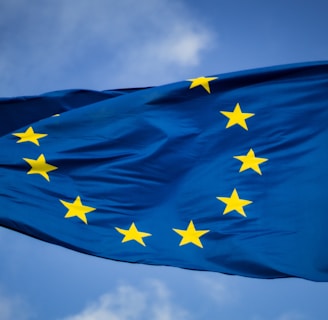Malta's DLT vs EU's MiCA Regulation: Analyzing Potential Areas of Conflict.
A Comparative Analysis between Malta's DLT Regulation and the EU's M.I.C.A. Regulation: Highlighting Potential Areas of Conflict.
NEW TECHNOLOGIES AND REGULATORY FRAMEWORKS.
Fabio Gasbarro
9/26/20234 min read


Table of contents
•Introduction •Understanding Malta's DLT • Understanding EU's MiCA Regulation • Areas of conflict between Malta's DLT and EU's MiCA Regulation • Impact on businesses • Conclusion
Introduction
If you're interested in the world of finance, you've probably heard of Malta's DLT (Distributed Ledger Technologies) and the EU's MiCA (Markets in Crypto Assets) regulations. Understanding each of them is crucial to understanding the potential areas of conflict that may arise between them. Malta's DLT refers to Malta's blockchain and cryptocurrency regulation, which has been in effect for a while now. On the other hand, MiCA aims to bring forth uniform regulations across the European Union (EU) for digital currencies. In this article, we will dive into both regulations, how they work, and how they might end up in conflict with each other. We'll explore potential areas of conflict, the implications of such conflicts, and ways to solve them. Ultimately, our goal is to inform you about this developing scenario in the world of finance and give you insight into how it might impact businesses. So let's dive in!
Understanding Malta's DLT
Malta's DLT is a blockchain-based system that offers an efficient and secure way to store data. Its purpose is to provide a transparent and decentralized method of record-keeping that cannot be altered. The advantages of DLT in Malta include reduced transaction costs, increased trust, improved efficiency, and reduced fraud. In addition, DLT has been widely adopted in Malta due to its robust legal framework, which provides a favorable environment for blockchain businesses. Malta has become an attractive destination for blockchain companies due to its progressive approach to regulation and its innovative technology ecosystem. Overall, DLT technology has the potential to revolutionize the way businesses operate in Malta and beyond.
Understanding EU's MiCA Regulation
The EU Markets in Crypto Assets Regulation (MiCA) is a comprehensive framework that aims to harmonize the regulation of crypto assets across member states. Its purpose is to create a consistent regulatory environment for cryptocurrencies across the European single market. MiCA covers a broad range of crypto assets offering including utility tokens, payment tokens and tokens that represent traditional financial instruments. Its scope extends to issuers, trading platforms, exchanges, and other intermediaries involved in crypto asset markets. One of the key advantages of MiCA is that it provides legal certainty for market participants which will encourage investment, innovation, and potentially more widespread adoption of digital currencies. However, there are also limitations to this regulation, it could burden smaller firms and start-ups who do not have the necessary resources and capabilities to comply with the regulation's requirements. Overall, the MiCA framework is designed to provide a clear, transparent and predictable regulatory regime for crypto assets. Its provisions also aim to protect consumers and ensure the integrity of crypto markets.
Areas of conflict between Malta's DLT and EU's MiCA Regulation
Potential conflicts can arise between Malta DLT and EU MiCA Regulation due to their differing approaches to the regulation of digital assets. One key area of conflict is the definition of digital assets. Malta DLT defines digital assets broadly to include any form of electronic record, while EU MiCA Regulation only covers crypto-assets. This could lead to confusion and uncertainty for businesses operating in both jurisdictions regarding which assets are within the scope of each regulation. Another key area of conflict is the regulatory requirements placed on issuers and service providers. Malta DLT has a principles-based approach, while EU MiCA Regulation has an extensive regulatory framework that imposes strict requirements on issuers and service providers. This could create a compliance burden for businesses operating in both jurisdictions or lead to conflicts around which regulatory requirements they need to adhere to. The implications of these conflicts could be significant. Businesses operating in both Malta and EU could face legal challenges, reputational risks, and uncertainties around compliance requirements. There could also be a negative impact on investment in these jurisdictions, as businesses may be hesitant to operate in areas with conflicting regulatory requirements. One possible solution to these conflicts is harmonization of regulatory frameworks between Malta DLT and EU MiCA Regulation. This would establish a more standard set of rules and requirements across jurisdictions, reducing the risk of conflicts and increasing certainty for issuers and service providers. In conclusion, while there are potential conflicts between Malta DLT and EU MiCA Regulation, there are also opportunities for growth. By addressing these conflicts through harmonization and standardization, Malta and the EU can create a more stable and supportive regulatory environment for digital assets, benefiting businesses and investors alike.
Impact on businesses
The conflicts between Malta DLT and EU MiCA regulation can have significant impacts on businesses. One of the main challenges is the legal uncertainty that arises from potential conflicts between the two regulatory frameworks. Companies operating in Malta may find it difficult to comply with both Malta DLT and EU MiCA regulations, leading to confusion and potential legal penalties. Another challenge is the potential for restricted market access due to conflicts between the two frameworks. Companies may be forced to choose between operating only in Malta or complying with EU MiCA regulations to access the broader European market. However, there are ways to overcome these conflicts. One solution is to ensure that companies adhere to the highest regulatory standards to avoid any potential legal issues. Another solution is to advocate for regulatory harmonization between Malta DLT and EU MiCA frameworks to reduce conflicts and promote industry growth. Despite the challenges, conflicts between Malta DLT and EU MiCA regulations also provide opportunities for growth. By creating innovative solutions that balance compliance with both regulatory frameworks, companies can position themselves as leaders in the industry and gain a competitive edge in the market. Overall, it's clear that conflicts between Malta DLT and EU MiCA regulations can have serious implications for businesses. It's critical that companies stay up-to-date on the latest developments and work towards finding solutions that reduce conflicts and promote sustainable growth within the industry.
Conclusion
In conclusion, the potential conflicts between Malta's DLT and EU's MiCA regulation could have significant implications for businesses operating in the EU. Despite the advantages of both legal frameworks, conflicts could lead to uncertainty over legal obligations and hinder innovation. Companies will need to navigate these challenges proactively and seek out solutions to ensure compliance and take advantage of growth opportunities. The EU's MiCA aims to provide a comprehensive legal framework for the digital finance industry and establish a level playing field for businesses. However, it is essential to assess the potential conflicts between frameworks to ensure a cohesive legal landscape for businesses.
